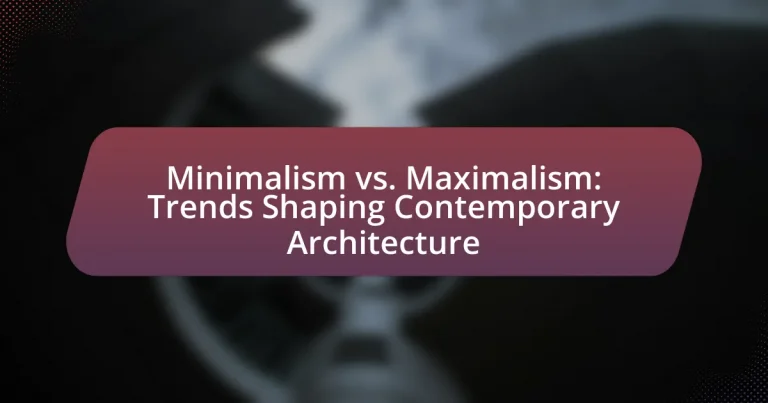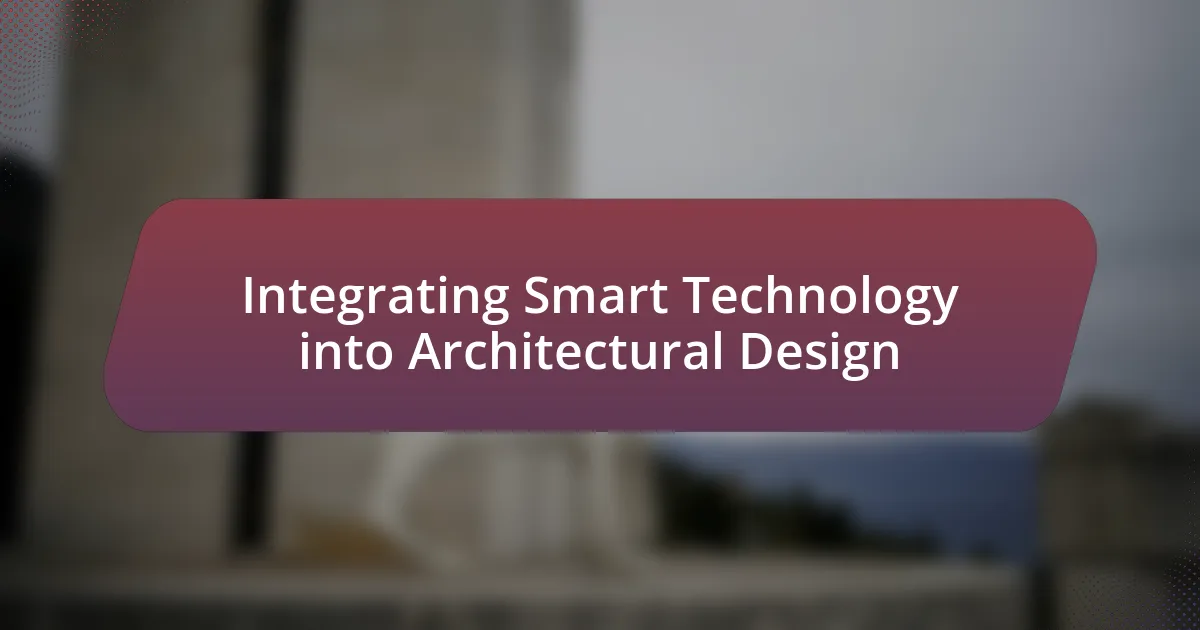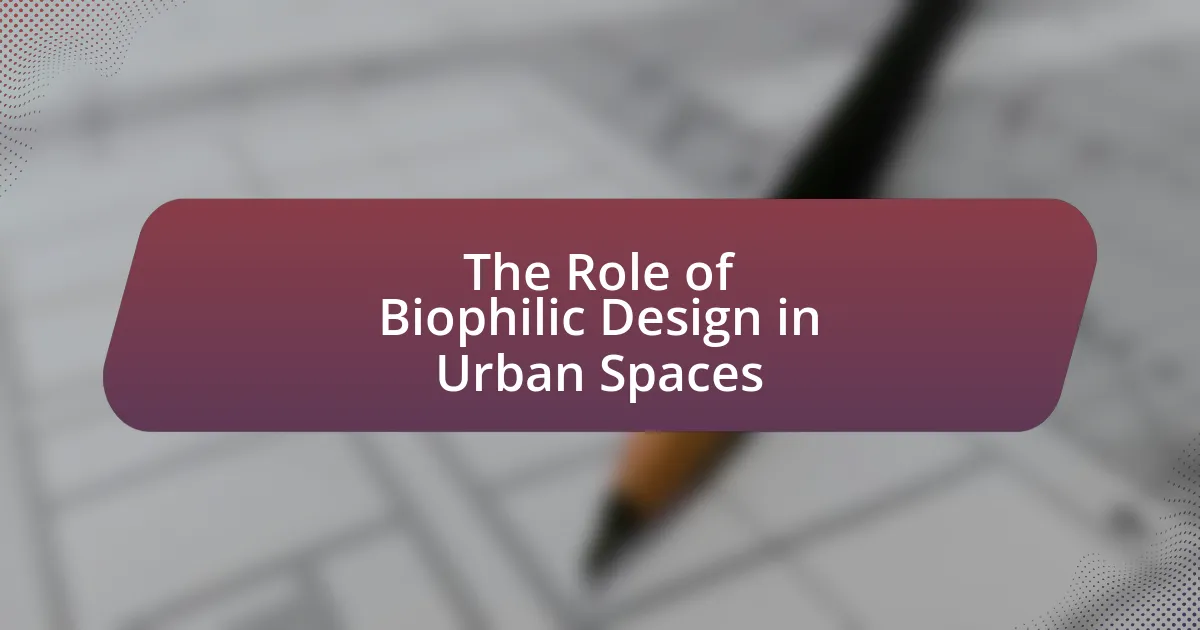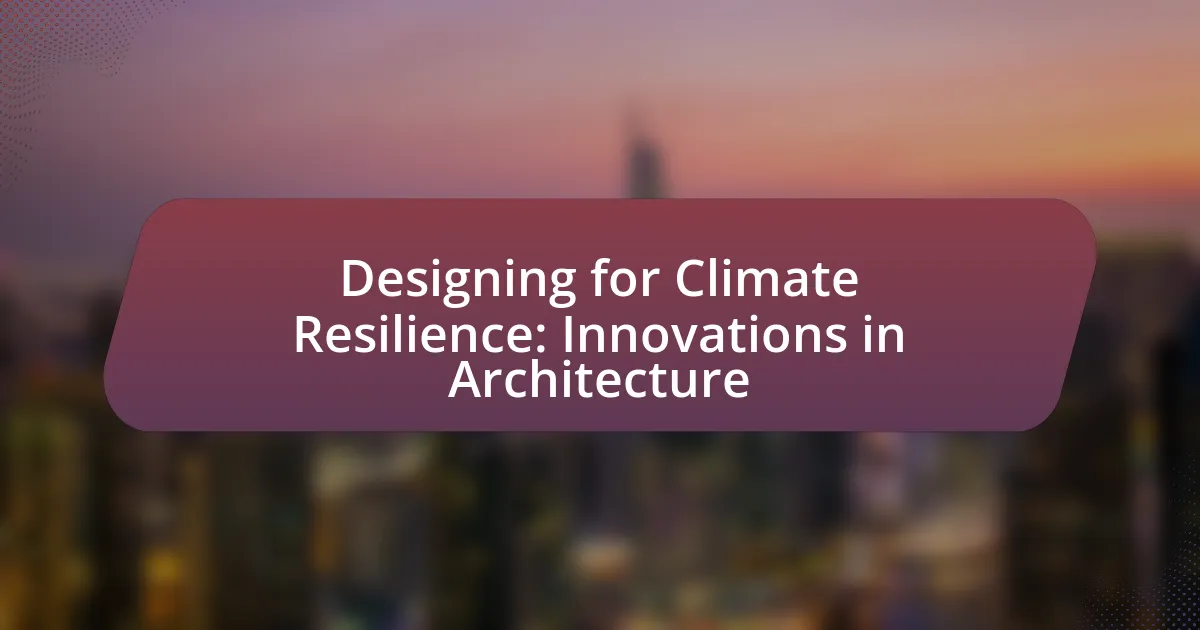The article explores the contrasting architectural philosophies of Minimalism and Maximalism, highlighting their fundamental concepts, design characteristics, and cultural relevance. Minimalism emphasizes simplicity, functionality, and open spaces, while Maximalism celebrates complexity, richness, and diverse materials. The discussion includes how these styles impact functionality, user experience, and current trends in architecture, as well as the integration of sustainability and technology. Additionally, practical considerations for choosing between Minimalism and Maximalism based on personal lifestyle and space requirements are addressed, providing insights into contemporary architectural practices.

What are the fundamental concepts of Minimalism and Maximalism in architecture?
Minimalism in architecture emphasizes simplicity, functionality, and the reduction of elements to their essential forms, often utilizing open spaces, neutral colors, and minimal ornamentation. This approach aims to create a sense of tranquility and clarity, as seen in the works of architects like Tadao Ando and John Pawson, who focus on the interplay of light and space.
In contrast, Maximalism embraces complexity, richness, and a diverse array of materials and colors, often incorporating intricate details and bold patterns. This style seeks to create a vibrant and layered experience, as exemplified by architects such as Frank Gehry and Zaha Hadid, who utilize dynamic forms and eclectic designs to evoke emotional responses.
Both concepts reflect distinct philosophies in architectural design, with Minimalism prioritizing restraint and Maximalism celebrating abundance.
How do Minimalism and Maximalism differ in their design philosophies?
Minimalism and Maximalism differ fundamentally in their design philosophies, with Minimalism emphasizing simplicity and functionality, while Maximalism embraces complexity and abundance. Minimalism focuses on reducing elements to their essential forms, often utilizing a limited color palette and open spaces to create a sense of tranquility and clarity. In contrast, Maximalism celebrates a rich variety of textures, colors, and patterns, aiming to create a vibrant and eclectic environment that reflects personal expression and creativity. This distinction is evident in architectural examples; for instance, the minimalist designs of Tadao Ando prioritize light and space, while the works of Antoni Gaudí exemplify the maximalist approach through intricate details and ornate forms.
What are the key characteristics of Minimalist architecture?
Minimalist architecture is characterized by simplicity, functionality, and the use of minimal materials. This design approach emphasizes open spaces, clean lines, and a lack of ornamentation, which creates a sense of tranquility and clarity. The focus on natural light and the integration of indoor and outdoor spaces are also key elements. Additionally, minimalist architecture often employs a neutral color palette, which enhances the feeling of spaciousness and calm. These characteristics are rooted in the principles of modernism and have been influential in various architectural movements since the mid-20th century, as seen in the works of architects like Tadao Ando and Ludwig Mies van der Rohe.
What defines Maximalist architecture and its aesthetic choices?
Maximalist architecture is defined by its embrace of complexity, bold colors, and an eclectic mix of styles and materials. This architectural approach prioritizes abundance and richness over simplicity, often featuring intricate details, layered textures, and a variety of decorative elements. For instance, Maximalist designs frequently incorporate vibrant patterns, contrasting shapes, and a diverse array of furnishings, creating visually stimulating environments. The aesthetic choices in Maximalism reflect a rejection of minimalism’s restraint, instead celebrating individuality and personal expression through an overwhelming sensory experience.
Why have Minimalism and Maximalism gained popularity in contemporary architecture?
Minimalism and Maximalism have gained popularity in contemporary architecture due to their distinct aesthetic appeals and cultural relevance. Minimalism emphasizes simplicity, functionality, and the use of space, resonating with a society increasingly focused on decluttering and sustainability. This trend is supported by the rise of digital technologies that facilitate efficient design processes and the demand for environments that promote mental well-being. Conversely, Maximalism celebrates boldness, complexity, and personalization, reflecting a counter-movement to minimalistic ideals. This approach caters to a desire for individuality and expression in an era of mass production, allowing architects to create vibrant, eclectic spaces that tell unique stories. The popularity of both styles illustrates a broader cultural shift towards embracing diverse expressions in design, influenced by social media and global interconnectedness.
What cultural and societal factors influence the rise of Minimalism?
Cultural and societal factors influencing the rise of Minimalism include a reaction against consumerism, the pursuit of sustainability, and the impact of digital technology. The backlash against excessive consumption has led individuals to seek simplicity and intentionality in their lives, as evidenced by the growing popularity of decluttering movements like Marie Kondo’s. Additionally, the increasing awareness of environmental issues has prompted a shift towards sustainable living, where Minimalism aligns with reducing waste and resource consumption. Furthermore, the digital age fosters a culture of minimalism through streamlined design in technology and social media, emphasizing clarity and focus over clutter. These factors collectively contribute to Minimalism’s appeal in contemporary society.
How does Maximalism reflect current trends in consumerism and identity?
Maximalism reflects current trends in consumerism and identity by emphasizing abundance, personalization, and self-expression in design. This aesthetic aligns with a consumer culture that values unique, curated experiences over minimalistic uniformity, as evidenced by the rise of platforms like Instagram, where visually rich and eclectic spaces gain popularity. Research indicates that consumers increasingly seek to showcase their individuality through their environments, leading to a demand for bold colors, diverse patterns, and layered textures in architecture and interior design. This shift highlights a broader societal move towards embracing complexity and diversity in personal identity, contrasting sharply with the simplicity and restraint of minimalism.

How do Minimalism and Maximalism impact the functionality of architectural spaces?
Minimalism enhances the functionality of architectural spaces by promoting simplicity, which allows for efficient use of space and reduces distractions. This design philosophy often emphasizes open layouts, natural light, and essential furnishings, leading to environments that foster focus and tranquility. In contrast, maximalism impacts functionality by embracing complexity and abundance, which can create vibrant, stimulating spaces that encourage creativity and interaction. However, this approach may also lead to clutter, potentially hindering movement and usability. Research indicates that minimalist designs can improve user satisfaction and productivity, while maximalist environments can enhance social engagement and aesthetic enjoyment, illustrating the distinct functional outcomes of each style.
What are the practical implications of Minimalist design on living spaces?
Minimalist design significantly impacts living spaces by promoting functionality, simplicity, and a sense of tranquility. This design approach reduces clutter, allowing for more open and airy environments, which can enhance mental well-being. Research indicates that minimalist spaces can lead to lower stress levels and improved focus, as evidenced by a study published in the Journal of Environmental Psychology, which found that individuals in minimalist environments reported higher levels of satisfaction and lower anxiety. Additionally, minimalist design often incorporates sustainable materials and energy-efficient solutions, contributing to environmental conservation and reducing living costs.
How does Minimalism enhance functionality and efficiency in architecture?
Minimalism enhances functionality and efficiency in architecture by prioritizing essential elements and reducing unnecessary components. This approach leads to streamlined designs that maximize usable space and improve the flow of movement within structures. For instance, minimalist architecture often employs open floor plans and multifunctional furniture, which can significantly reduce clutter and enhance spatial efficiency. Research indicates that minimalist designs can lead to lower construction and maintenance costs, as fewer materials are used and simpler systems are implemented. This efficiency not only benefits the environment by minimizing waste but also creates a more focused and serene living or working environment, which can improve overall well-being.
What challenges does Minimalism present in terms of space utilization?
Minimalism presents challenges in space utilization by often leading to insufficient storage and functional areas. The emphasis on simplicity and fewer possessions can result in a lack of practical space for everyday activities, as minimalist designs prioritize aesthetics over functionality. For instance, a study by the Journal of Interior Design highlights that minimalist spaces can feel cramped if not carefully planned, as the absence of clutter may not compensate for the need for adequate storage solutions. This can create difficulties in maintaining organization and accessibility within the living environment.
In what ways does Maximalism influence the experience of architectural environments?
Maximalism influences the experience of architectural environments by promoting richness in detail, vibrant colors, and diverse materials, which create immersive and stimulating spaces. This approach contrasts with minimalism by encouraging complexity and personalization, allowing for a more expressive and dynamic interaction between occupants and their surroundings. For instance, buildings designed with maximalist principles often feature intricate patterns, bold textures, and eclectic furnishings, which can evoke emotional responses and foster a sense of identity. Research indicates that environments rich in sensory stimuli can enhance user engagement and satisfaction, demonstrating the psychological impact of maximalist design on human experience.
How does Maximalism create immersive and dynamic spaces?
Maximalism creates immersive and dynamic spaces by employing bold colors, diverse textures, and an abundance of decorative elements that engage the senses. This design approach encourages a layered aesthetic, where various patterns and styles coexist, fostering a sense of richness and complexity. For instance, the use of eclectic furnishings, vibrant artwork, and intricate details invites exploration and interaction, making the environment feel alive and stimulating. Research indicates that environments designed with maximalist principles can enhance emotional well-being and creativity, as they provide a visually engaging backdrop that resonates with individual expression and cultural narratives.
What are the potential drawbacks of a Maximalist approach in architecture?
The potential drawbacks of a Maximalist approach in architecture include excessive complexity, high costs, and potential for visual chaos. Excessive complexity can overwhelm users and detract from functionality, as seen in projects where intricate designs hinder usability. High costs arise from the need for diverse materials and elaborate construction techniques, which can lead to budget overruns, as evidenced by large-scale Maximalist projects often exceeding initial financial estimates. Additionally, visual chaos can result from the combination of numerous styles and elements, making it difficult for observers to appreciate the overall design, a phenomenon noted in critiques of certain contemporary Maximalist buildings.

What are the current trends and future directions for Minimalism and Maximalism in architecture?
Current trends in Minimalism in architecture emphasize sustainability, functionality, and the use of natural materials, while Maximalism is trending towards bold colors, intricate patterns, and personalized spaces. Minimalist designs often incorporate eco-friendly technologies and open spaces that promote simplicity and tranquility, reflecting a growing societal preference for mindfulness and environmental consciousness. In contrast, Maximalism is gaining traction as a response to the sterile nature of Minimalism, encouraging expressive designs that celebrate individuality and cultural diversity. Future directions for Minimalism may include further integration of smart home technologies and biophilic design principles, while Maximalism is likely to evolve with a focus on curated collections and experiential environments that engage the senses. These trends are supported by a shift in consumer preferences towards more meaningful and personalized living spaces, as evidenced by the increasing popularity of design shows and social media platforms that showcase diverse architectural styles.
How are architects integrating Minimalist and Maximalist elements in their designs?
Architects are integrating Minimalist and Maximalist elements in their designs by creating spaces that balance simplicity with bold, expressive features. This approach often involves using a minimalist framework—characterized by clean lines, open spaces, and a limited color palette—while incorporating maximalist elements such as vibrant patterns, eclectic furnishings, and intricate details to add depth and personality. For instance, a minimalist structure may feature a stark exterior but include a richly decorated interior with layered textures and diverse art pieces, exemplifying how both styles can coexist harmoniously. This blending reflects a growing trend in contemporary architecture where functionality meets artistic expression, allowing for versatile spaces that cater to diverse aesthetic preferences.
What hybrid approaches are emerging in contemporary architectural practices?
Emerging hybrid approaches in contemporary architectural practices include the integration of minimalism and maximalism, resulting in designs that balance simplicity with rich ornamentation. This trend is evident in projects that utilize minimalist forms and materials while incorporating maximalist elements such as vibrant colors, intricate patterns, and diverse textures. For instance, the work of architects like Bjarke Ingels and Zaha Hadid showcases this blend, where clean lines coexist with bold, expressive features, creating spaces that are both functional and visually stimulating. This hybridization reflects a broader cultural shift towards personalization in architecture, allowing for unique expressions that cater to diverse aesthetic preferences.
How do sustainability and technology influence these architectural trends?
Sustainability and technology significantly influence architectural trends by driving the adoption of energy-efficient designs and smart building systems. Sustainable practices, such as the use of renewable materials and energy-efficient technologies, promote minimalism by emphasizing simplicity and functionality, which reduces resource consumption. For instance, the integration of solar panels and green roofs in minimalist designs not only lowers energy costs but also minimizes environmental impact. Conversely, maximalism often incorporates advanced technologies to create complex, visually striking structures that may utilize innovative materials and construction methods, such as 3D printing and parametric design, to enhance aesthetic appeal while still addressing sustainability concerns. This dual influence of sustainability and technology shapes contemporary architecture by balancing ecological responsibility with creative expression.
What practical tips can be applied when choosing between Minimalism and Maximalism in design?
When choosing between Minimalism and Maximalism in design, consider the intended purpose and audience of the space. Minimalism emphasizes simplicity and functionality, making it suitable for environments that require focus and clarity, such as offices or study areas. In contrast, Maximalism allows for rich detail and personalization, ideal for spaces meant for creativity and expression, like art galleries or personal residences.
Evaluate the emotional response you want to evoke; Minimalism often creates a sense of calm and order, while Maximalism can inspire excitement and energy. Additionally, assess the scale of the space; larger areas may benefit from Maximalist elements to avoid feeling empty, whereas smaller spaces might be overwhelmed by excessive detail.
Lastly, consider the maintenance and upkeep; Minimalist designs typically require less maintenance due to fewer decorative elements, while Maximalist designs may demand more effort to keep organized and visually appealing.
How can one effectively balance aesthetic preferences with functional needs in architecture?
One can effectively balance aesthetic preferences with functional needs in architecture by integrating design principles that prioritize both beauty and utility. This can be achieved through the use of adaptable spaces that serve multiple purposes, allowing for aesthetic elements to enhance functionality. For instance, open floor plans can create visually appealing environments while providing flexibility for various activities. Additionally, employing sustainable materials and energy-efficient designs not only meets functional requirements but also contributes to the overall aesthetic appeal. Research indicates that buildings designed with both aesthetics and functionality in mind can improve user satisfaction and well-being, as seen in studies conducted by the American Institute of Architects, which highlight the importance of harmonious design in enhancing the quality of life.
What considerations should be made for personal lifestyle when selecting a design approach?
When selecting a design approach, individuals should consider their daily routines, values, and space requirements. Personal lifestyle influences whether minimalism or maximalism aligns better with one’s needs; for example, minimalism suits those who prioritize simplicity and functionality, while maximalism appeals to individuals who value personalization and abundance. Research indicates that environments reflecting personal values enhance well-being and satisfaction, supporting the idea that design choices should resonate with one’s lifestyle preferences.





